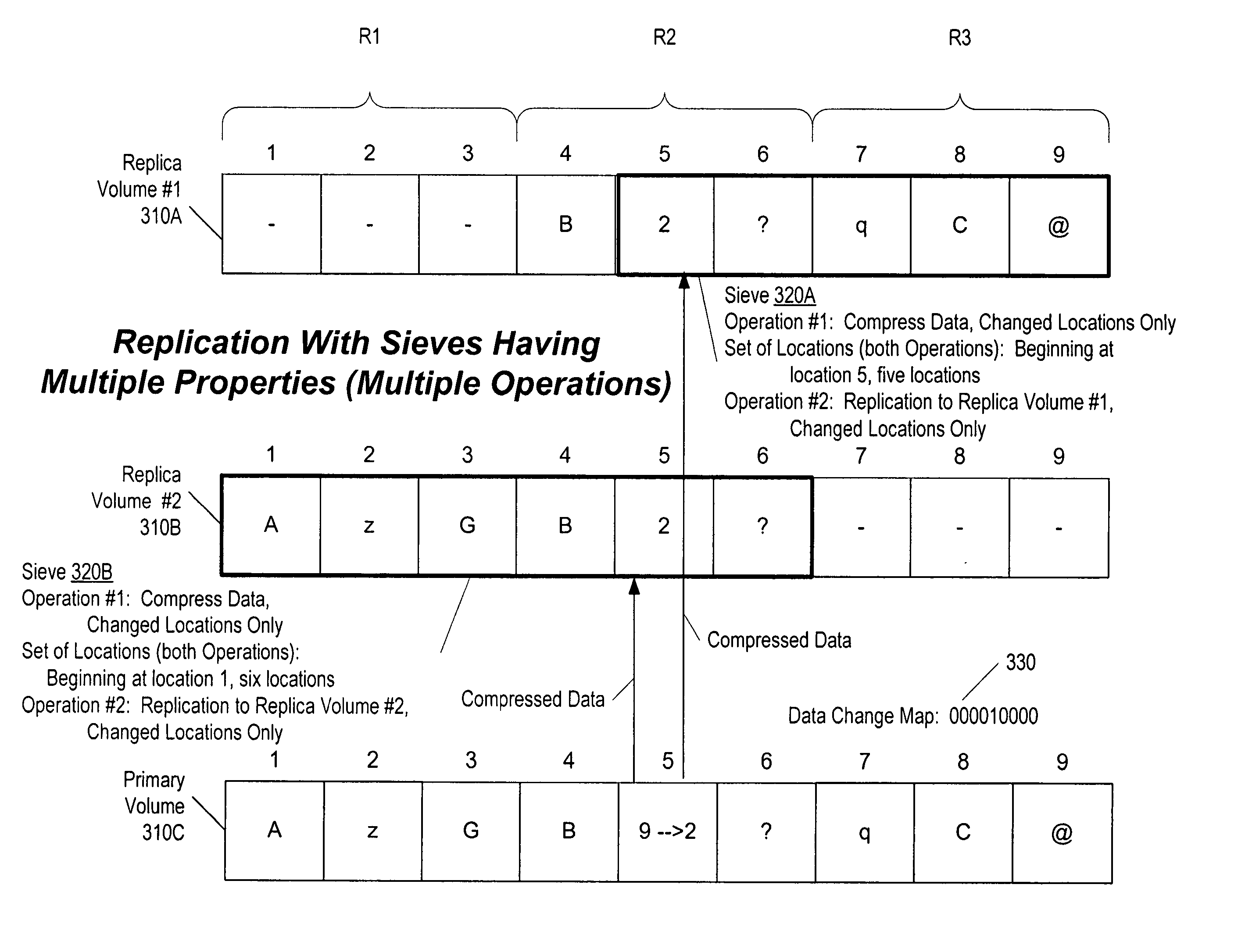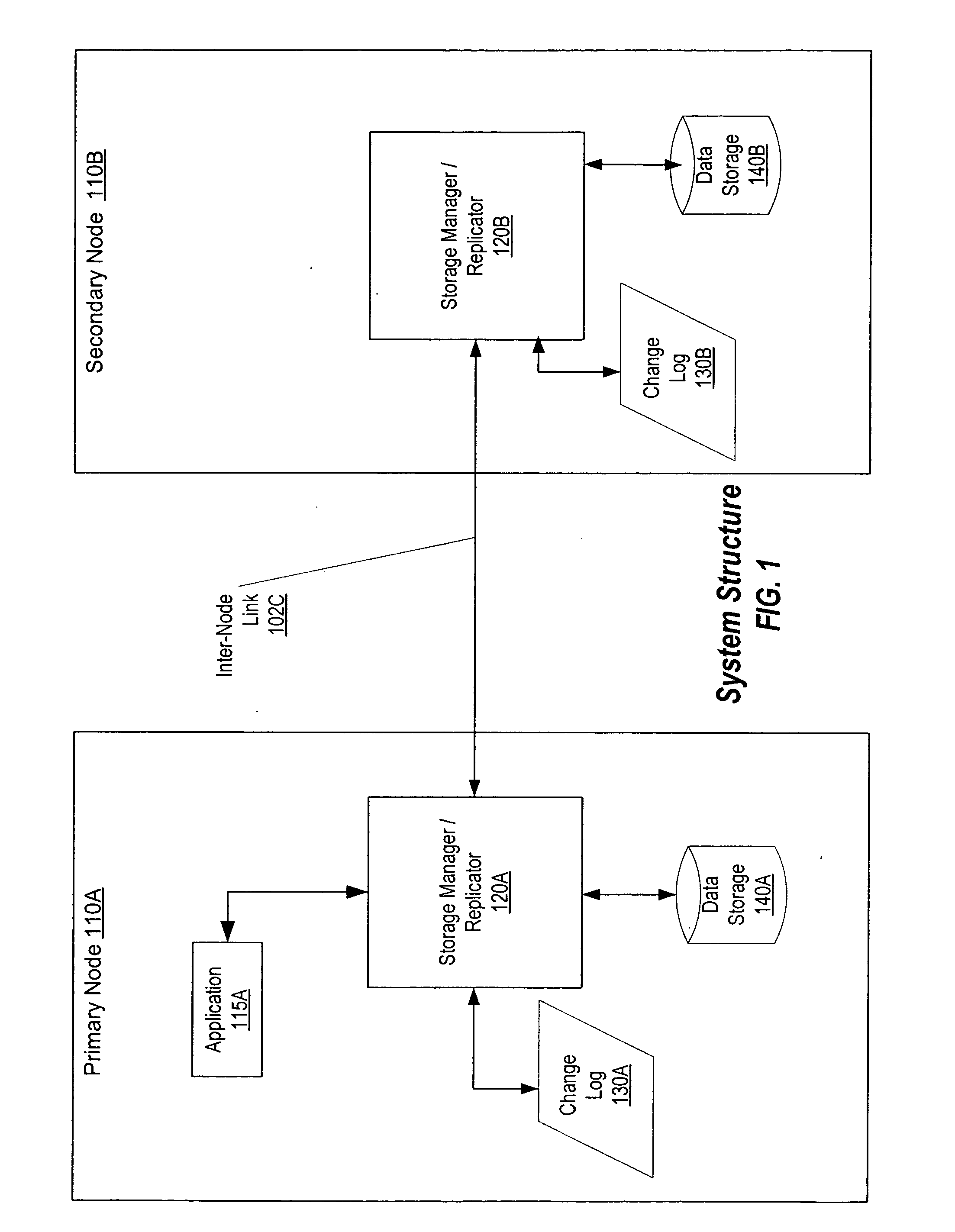Performance of operations on selected data in a storage area
a technology for performing operations and data storage, applied in memory systems, instruments, redundancy hardware error correction, etc., can solve problems such as threatening an organization's productivity, affecting their reputation and bottom lines, and not preventing data loss
- Summary
- Abstract
- Description
- Claims
- Application Information
AI Technical Summary
Problems solved by technology
Method used
Image
Examples
example implementation
Of Sieves
[0063] A volume sieve can be described as a property and a set of one or more storage locations to which an operation indicated by the property is to be performed. The sieve property can be represented as a bit string, where each bit in the string corresponds to one of the possible volume operations. If a particular bit is set; then the corresponding property is active and the equivalent operation is performed on the data stored in the underlying storage area (volume). If more than one bit is set in the string, then the sieve represents a combination of properties. For example, if the bit position for replication property is VOL_SIEVE_PROPERTY_REPLICATE and that for compression is VOL_SIEVE_PROPERTY_COMPRESS, then the volume sieve property can be set to (VOL_SIEVE_PROPERTY_REPLICATE|VOL_SIEVE_PROPERTY_COMPRESS) to indicate that the replication of the involved portions of the volume should be compressed.
[0064] Multiple sieves can be applied to a storage area (volume) with v...
PUM
 Login to View More
Login to View More Abstract
Description
Claims
Application Information
 Login to View More
Login to View More - R&D
- Intellectual Property
- Life Sciences
- Materials
- Tech Scout
- Unparalleled Data Quality
- Higher Quality Content
- 60% Fewer Hallucinations
Browse by: Latest US Patents, China's latest patents, Technical Efficacy Thesaurus, Application Domain, Technology Topic, Popular Technical Reports.
© 2025 PatSnap. All rights reserved.Legal|Privacy policy|Modern Slavery Act Transparency Statement|Sitemap|About US| Contact US: help@patsnap.com



